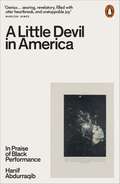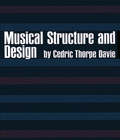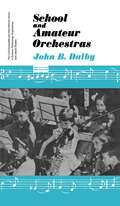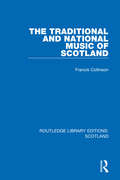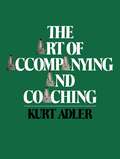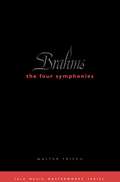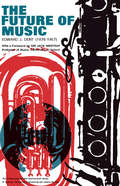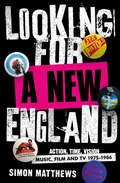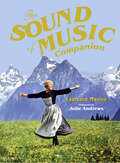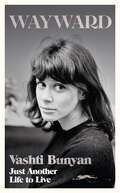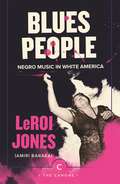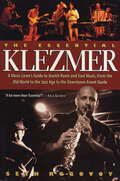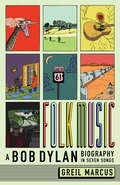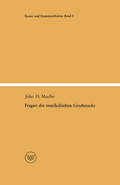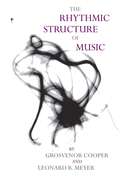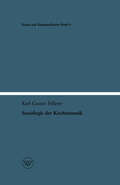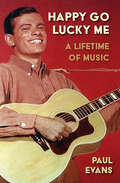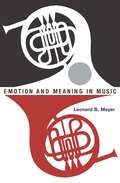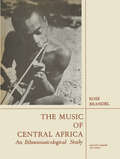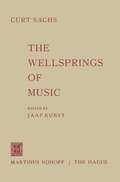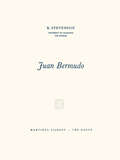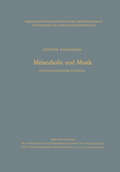- Table View
- List View
Lightning Striking
by Lenny Kaye'A true testimonial and epic love letter to the soul saving power of rock & roll . . . Read it and be inspired, as I was' Bobby Gillespie'Lenny Kaye has illuminated ten facets of the jewel called rock and roll from a uniquely personal and knowledgeable perspective. He draws from a lifetime of inspiration and experience. A youth plugging in his first electric guitar, a fan taking the dance floor, a propelling player, a humble guardian of history, and the writer I have always known him to be' Patti SmithMemphis, 1954. New Orleans 1957. Philadelphia 1959. Liverpool, 1962. San Francisco 1967. Detroit 1969. New York, 1975. London 1977. Los Angeles 1984 / Norway 1993. Seattle 1991.Rock and roll was birthed in basements and garages, radio stations and dance halls, in cities where unexpected gatherings of artists and audience changed and charged the way music is heard and celebrated, capturing lightning in a bottle. Musician and writer Lenny Kaye explores ten crossroads of time and place that define rock and roll, its unforgettable flashpoints, characters and visionaries, how each generation came to be, how it was discovered by the world. Whether Elvis Presley's Memphis, the Beatles' Liverpool, Patti Smith's New York or Kurt Cobain's Seattle, LIGHTNING STRIKING reveals the communal energy that creates a scene, a guided tour inside style and performance, to see who's on stage, along with the movers and shakers, the hustlers and hangers-on, and why everybody is listening. Grandly sweeping and minutely detailed, informed by Kaye's acclaimed knowledge and experience as a working musician, LIGHTNING STRIKING is an ear-opening insight into our shared musical and cultural history, a carpet ride of rock and roll's most influential movements and moments.
A Little Devil in America: In Praise of Black Performance
by Hanif AbdurraqibAn electrifying celebration of Black performances, cultures and communities in the United States, from the New York Times bestselling poet and critic Hanif Abdurraqib'Gorgeous' - Brit Bennett'Pure genius' - Jacqueline Woodson'One of the most dynamic books I have ever read' - Clint SmithAt the March on Washington, Josephine Baker reflected on her life and her legacy. She had spent decades as one of the most successful entertainers in the world, but, she told the crowd, "I was a devil in other countries, and I was a little devil in America, too". Inspired by these words, Hanif Abdurraqib has written a stirring meditation on Black performance in the modern age, in which culture, history and his own lived experience collide.With sharp insight, humour and heart, Abdurraqib explores a sequence of iconic and intimate performances that take him from mid-century Paris to the moon -- and back down again, to a cramped living room in Columbus, Ohio. Each one, he shows, has layers of resonance across Black and white cultures, the politics of American empire, and his own personal history of love and grief -- whether it's the twenty-seven seconds of 'Gimme Shelter' in which Merry Clayton sings, or the magnificent hours of Aretha Franklin's homegoing; Beyoncé's Super Bowl show or a schoolyard fistfight; Dave Chapelle's skits or a game of spades among friends.
Musical Structure and Design
by Cedric T. DavieCedric Thorpe Davie is himself a noted composer, and musical forms are as familiar to him as armatures are to the sculptor. As a result, he is able not only to describe them clearly, but also to evaluate their qualities and to point out their truly characteristic fundamentals. It is his discussions of such core questions as: What is the true basis of sonata form? And What are the qualities of a successful form that make for convincing music? that cause his book to be the unusually interesting and lively study that it is.The text defines and describes the forms commonly used by Western composers in the period between 1550 and 1900. These are the binary and ternary forms, including the de capo aria, minuet-and-trio, and rondo; the sonata form; the forms in the concerto; variation forms -- including ground bass, passacaglia, and chaconne; and the contrapuntal forms, notably the fugue and canon. Each form is illustrated with a detailed analysis of a specific piece or movement, usually from the work of Bach, Haydn, Mozart, or Beethoven, but often from Purcell, Brahms, Dvorak, or other composers. The student is also referred to a list of compositions in the same form for further study.Experienced musicians, both professional and amateur, and students will find the author's thoughtful, well-written discussions of the controversial aspects of formal analysis extremely perceptive and stimulating. Beginning music lovers, even those with little or no training in music, will come away from a thorough reading of the book with a good knowledge of each important musical form, and with a greatly increased insight into the way music is organized.
School and Amateur Orchestras: The Commonwealth and International Library: Music Division
by John B. DalbySchool and Amateur Orchestras is devoted to a discussion of school and amateur orchestras and consideration of instruments that are normally associated with them. The book opens with a general discussion of students, teachers, music centers, and junior music schools. This is followed by separate chapters on the teaching of string, woodwind and brass, and percussion instruments. Subsequent chapters deal with the planning and direction of orchestras and the selection of instruments and music.
The Traditional and National Music of Scotland (Routledge Library Editions: Scotland #10)
by Francis CollinsonOriginally published in 1966, this was the first book on this subject to be published for over a hundred years. It covers all facets including little-known types of Gaelic song, the bagpipes and their music, including the esoteric subject of pibroch, the Ceol Mor or ‘Great Music’ of the pipes. It gives a comprehensive review of the fiddle composers and their music, and of the Clarsach and its revival, with an example of all-but-extinct Scottish harp music. A chapter is devoted to the music of Orkney and Shetland and the book contains over 100 examples of music many of which were from the author’s own collection and published here for the first time.
The Traditional and National Music of Scotland (Routledge Library Editions: Scotland #10)
by Francis CollinsonOriginally published in 1966, this was the first book on this subject to be published for over a hundred years. It covers all facets including little-known types of Gaelic song, the bagpipes and their music, including the esoteric subject of pibroch, the Ceol Mor or ‘Great Music’ of the pipes. It gives a comprehensive review of the fiddle composers and their music, and of the Clarsach and its revival, with an example of all-but-extinct Scottish harp music. A chapter is devoted to the music of Orkney and Shetland and the book contains over 100 examples of music many of which were from the author’s own collection and published here for the first time.
The Art of Accompanying and Coaching
by Kurt AdlerIN WRITING a book for which there is no precedent (the tistic achievements. But, alas, there has not been such last textbooks about accompanying were written during a genius in the realm of music during the twentieth the age of thorough bass or shortly thereafter - the century. The creative musical genius of our space age eighteenth and early nineteenth centuries - and dealt has yet to be discovered, if he has been born. exclusively with the problems timely then) one must Our time has perfected technique to such a degree make one's own rules and set one's own standards. This that it could not help but create perfect technician freedom makes the task somewhat easier, if, on the one artists. Our leading creative artists master technique hand, one looks to the past: there is no generally ap to the point of being able to shift from one style to proved model to be followed and to be compared with another without difficulty. Take Stravinsky and Picasso, one's work; but, on the other hand, the task is hard be for instance: they have gone back and forth through as cause one's responsibility to present and future genera many periods of style as they wished. Only with a stu tions of accompanists and coaches is great.
Brahms: The Four Symphonies (PDF)
by Beth Baron"Walter Frisch provides a sensitive analytical commentary on the symphonies as well as a consideration of their place within Brahms's oeuvre, within the symphonic repertory of his day, and within the broader musical culture of nineteenth-century Germany and Austria. Frisch also pays particular attention to the evolution of performance style, describing how orchestra size, playing techniques, tempi, and articulation have changed since Brahms's symphonies were first heard."--BOOK JACKET
The Future of Music: The Commonwealth and International Library: Music Division
by Edward J. DentThe Future of Music was first published under the title TERPANDER or Music and the Future in 1926 in a series ""To-day and Tomorrow"" (Kegan Paul, Trench, Trubner & Co. Ltd.). It has been reset and is reissued as a tribute to a great British musician, Edward J. Dent. Dent was fifty years old when he wrote this little book the future of music. Though his book is concerned with twentieth-century music he scarcely mentions any living composer by name. He is dealing primarily with taste and with our varied reactions to the music of the past and the present. The past is important, because it is both a key and an obstacle to our appreciation of the present. For this reason Dent includes a masterly summary of the history of music, from which his own preferences are almost entirely excluded; and to this is added a miniature essay on aesthetics which can be read with profit even by those who have no special interest in music.
Looking for a New England: Action, Time, Vision: Music, Film and TV 1975 - 1986
by Simon MatthewsWhat happened to UK cinema and TV when swinging London ended? Looking for a New England covers the period 1975 to 1986, from Slade in Flame to Absolute Beginners.A carefully researched exploration of transgressive films, the career of David Bowie, dystopias, the Joan Collins ouevre, black cinema, the origins and impact of punk music, political films, comedy, how Ireland and Scotland featured on our screens and the rise of Richard Branson and a new, commercial, mainstream. The sequel to Psychedelic Celluloid, it describes over 100 film and TV productions in detail, together with their literary, social and musical influences during a time when profound changes shrank the size of the UK cinema industry.Praise for Psychedelic Celluloid:'Addresses everything with a thoroughness and eye for detail that's hugely impressive' - Irish News'The ultimate catalogue of musical references in film and TV from the swinging sixties' - Glass Magazine'A must-purchase for fans of British films and pop music' - Goldmine
The Sound of Music Companion: The Official Companion To The World's Most Beloved Musical
by Laurence MaslonThe definitive book on the world's most beloved musical, TheSound of Music Companion charts the incredible and enduring story of Maria von Trapp and her story over the last hundred years – from Maria's birth in Vienna in 1905 to the 50th anniversary of the film's release in 2015.
Wayward: Just Another Life to Live
by Vashti Bunyan'Magical and transporting . . . Wayward proves that Bunyan has lived the best possible life, on her own idiosyncratic terms'Maggie O'Farrell'A gorgeous account of outsiderness and survival: a map of how to live outside the boundaries and of striving for an authentic artistic life. A quietly defiant and moving work' Sinéad Gleeson'An epic in miniature . . . I loved - and lived - every sentence' Benjamin MyersIn 1968, Vashti Bunyan gave up everything and everybody she knew in London to take to the road with a horse, wagon, dog, guitar and her then partner. They made the long journey up to the Outer Hebrides in an odyssey of discovery and heartbreak, full of the joy of freedom and the trudge of everyday reality, sleeping in the woods, fighting freezing winters and homelessness. Along the way, Vashti wrote the songs that would lead to the recording of her 1970's album Just Another Diamond Day, the lilting lyrics and guitar conveying innocent wonder at the world around her, whilst disguising a deeper turmoil under the surface. From an unconventional childhood in post-war London, to a fledgling career in mid-sixties pop - recording a single written by Mick Jagger and Keith Richards - to the despair and failure to make any headway with her own songs, she rejected the music world altogether and left it all behind. After retreating to a musical wilderness for thirty years, the rediscovery of her recordings in 2000 brought Vashti a second chance to write, record and perform once more. One of the great hippie myths of the 1960s, Wayward, Just Another Life to Live, rewrites the narrative of a barefoot girl on the road to describe a life lived at full tilt from the first, revealing what it means to change course and her emotional struggle, learning to take back control of her own life.
Blues People (Canons)
by LeRoi JonesIn this essential and impassioned text, LeRoi Jones traces the intertwined development of blues and jazz music with the history of its creators in ‘White America’. As important and relevant as at its first publication in 1963, it shows how music and its people are inseparable – expressing and reflecting the other, surviving and adapting through oppression.
The Essential Klezmer
by Seth RogovoyYou can hear it in the hottest clubs in New York, the hippest rooms in New Orleans, Chicago, and San Francisco, and in top concert halls around the world. It's a joyous sound that echoes the past. It's Old World meets New World. It's secular and sacred. It's traditional and experimental. It's played by classical violinist Itzhak Perlman (his all-klezmer album in his all-time best-seller!), the hypno-pop band Yo La Tengo, and avant-gardist John Zorn. It made the late great Benny Goodman's clarinet wail. It's klezmer and it's hot!The Essential Klezmer is the definitive introduction to a musical form in the midst of a renaissance. It documents the history of klezmer from its roots in the Jewish communities of medieval Eastern Europe to its current revival in Europe and America. It includes detailed information about the music's social, cultural, and political roots as well as vivid descriptions of the instruments, their unique sounds, and the players who've kept those sounds alive through the ages. Music journalist Seth Rogovoy skillfully conveys the emotional intensity and uplifting power of klezmer and the reasons for its ever widening popularity among Jews and Gentiles, Hasidim and club kids, grandparents and their grandkids. A comprehensive discography presents the "Essential Klezmer Library," extensive lists of recordings, artists, and styles, as well as an up-to-the-minute resource of music retailers, festivals, workshops, and klezmer Web sites.The Essential Klezmer is as entertaining as it is enlightening.
Folk Music: A Bob Dylan Biography in Seven Songs
by Greil MarcusAcclaimed cultural critic Greil Marcus tells the story of Bob Dylan through the lens of seven penetrating songs “Marcus delivers yet another essential work of music journalism.”—Kirkus Reviews (starred review) “Further elevates Marcus to what he has always been: a supreme artist-critic.”—Hilton Als “Greil Marcus is already the most important chronicler of Dylan. But here he outdoes himself.”—Rachel Kushner Across seven decades, Bob Dylan has been the first singer of American song. As a writer and performer, he has rewritten the national songbook in a way that comes from his own vision and yet can feel as if it belongs to anyone who might listen. In Folk Music, Greil Marcus tells Dylan’s story through seven of his most transformative songs. Marcus’s point of departure is Dylan’s ability to “see myself in others.” Like Dylan’s songs, this book is a work of implicit patriotism and creative skepticism. It illuminates Dylan’s continuing presence and relevance through his empathy—his imaginative identification with other people. This is not only a deeply felt telling of the life and times of Bob Dylan, but a rich history of American folk songs and the new life they were given as Dylan sat down to write his own.
Fragen des musikalischen Geschmacks: Eine musiksoziologische Studie (Kunst und Kommunikation #8)
by John Henry MuellerThe Rhythmic Structure of Music
by Grosvenor Cooper Leonard B. MeyerIn this influential book on the subject of rhythm, the authors develop a theoretical framework based essentially on a Gestalt approach, viewing rhythmic experience in terms of pattern perception or groupings. Musical examples of increasing complexity are used to provide training in the analysis, performance, and writing of rhythm, with exercises for the student's own work. "This is a path-breaking work, important alike to music students and teachers, but it will make profitable reading for performers, too."—New York Times Book Review "When at some future time theories of rhythm . . . are . . . as well understood, and as much discussed as theories of harmony and counterpoint . . . they will rest in no small measure on the foundations laid by Cooper and Meyer in this provocative dissertation on the rhythmic structure of music."—Notes ". . . . a significant, courageous and, on the whole, successful attempt to deal with a very controversial and neglected subject. Certainly no one who takes the time to read it will emerge from the experience unchanged or unmoved."—Journal of Music Theory The late GROSVENOR W. COOPER, author of Learning to Listen, was professor of music at the University of California at Santa Cruz.
Soziologie der Kirchenmusik: Materialien zur Musik- und Religionssoziologie (Kunst und Kommunikation #9)
by Karl Gustav FellererHappy Go Lucky Me: A Lifetime of Music
by Paul EvansPaul Evans, a New Yorker has had a long and varied musical career. As a songwriter, Paul has written hits for himself as well as for Bobby Vinton – the 1962 classic, ‘Roses Are Red, My Love’, the Kalin Twins ‘When’ in 1957, and Elvis Presley ‘The Next Step is Love’ and ‘I Gotta Know’ and more. His songs have been featured in movies – Martin Scorsese’s Goodfellas and John Waters’ Pecker, television shows (Scrubs) and TV ads. He also wrote an off-off Broadway show, Cloverleaf Crisis, and the theme for the original network television show, CBS This Morning. Paul has spent a great deal of his life as a recording artist. From his 1959 and 60’s hits: ‘Seven Little Girls Sitting in The Back Seat’, ‘Midnight Special’ and ‘Happy Go Lucky Me’ to his 1979 hit: ‘Hello, This Is Joannie’, #6 on the UK pop charts and Top 40 on Billboard’s Country charts. This book describes his journey from getting his start in the music business, becoming part of the Brill’s song-writing community and the sixty-three music-filled years that followed.
Emotion and Meaning in Music
by Leonard B. Meyer"Altogether it is a book that should be required reading for any student of music, be he composer, performer, or theorist. It clears the air of many confused notions . . . and lays the groundwork for exhaustive study of the basic problem of music theory and aesthetics, the relationship between pattern and meaning."—David Kraehenbuehl, Journal of Music Theory "This is the best study of its kind to have come to the attention of this reviewer."—Jules Wolffers, The Christian Science Monitor "It is not too much to say that his approach provides a basis for the meaningful discussion of emotion and meaning in all art."—David P. McAllester, American Anthropologist "A book which should be read by all who want deeper insights into music listening, performing, and composing."—Marcus G. Raskin, Chicago Review
Emotion and Meaning in Music
by Leonard B. Meyer"Altogether it is a book that should be required reading for any student of music, be he composer, performer, or theorist. It clears the air of many confused notions . . . and lays the groundwork for exhaustive study of the basic problem of music theory and aesthetics, the relationship between pattern and meaning."—David Kraehenbuehl, Journal of Music Theory "This is the best study of its kind to have come to the attention of this reviewer."—Jules Wolffers, The Christian Science Monitor "It is not too much to say that his approach provides a basis for the meaningful discussion of emotion and meaning in all art."—David P. McAllester, American Anthropologist "A book which should be read by all who want deeper insights into music listening, performing, and composing."—Marcus G. Raskin, Chicago Review
The Music of Central Africa: An Ethnomusicological Study Former French Equatorial Africa the Former Belgian Congo, Ruanda-Urundi Uganda, Tanganyika
by Rose BrandelUnder the inspiring guidance of my mentor, Curt Sachs, this work was conceived, planned, and executed. It gained in dimension under the acute and patient perusal of Gustave Reese to whose brilliant propensity for clarity of thought and of style I owe a huge debt. Furthermore, the helpful suggestions made by Martin Bernstein and by J an LaRue are gratefully acknowledged. If Jaap Kunst had not kindly gone to the trouble of ordering, supervising the con struction of, and mailing to me from Amsterdam his personally designed monochord, an important section of this work could not have taken form. This preface is not complete, of course, without final thanks to my husband, Harvey B. Natanson, for his sustained interest and encouragement. R. B. Note As the present work goes to press, the political map of Africa is flowing into a new mold. Several countries have obtained independence, and new names and data should be con sidered: French Equatorial Africa has become (November 28-December I, 1958) four independent countries - Republic of the Congo: Brazzaville (formerly Middle Congo), Gabon Republic (formerly Gabon) , Central African Republic (formerly Ubangi-Shari), and Republic of Chad (formerly Chad). The Belgian Congo has become (June 30,1960) the Republic of the Congo: Leopoldville.
Juan Bermudo
by R. StevensonBERMUDO alone of the many Spanish theorists and composers of the 16th century seems to have written anything specifically for New World use. All the more fitting is it, then, to have completed this monograph in a part of the Spanish Indies that was stirring every Andalusian's imagination during the days when he was first sending his books across the Atlantic. In every way his was a remarkable personality. He was the first to compose and publish any organ music in Spain. As if the publication of such music in staff-notation were not enough he also published the first Spanish keyboard piece in tablature. He was the first in Spain to print any music in score. He is cited by Pincherle as the first to publish a harp method anywhere. He pioneered with the first treatise specifically designed for female use. He also "enjoys" the distinction of having become in Tapia's Verge! de Musica (1570) the most ruthlessly plagiarized writer in Spanish musical history. If bulk determines preeminence he stands above even Tomas de Santa Maria - who published only one volume, and that containing considerably less text. If range of interests determines rank no one else writing in Spanish during his century even approaches him. Nor does anyone else in Spanish have so many authorities at his fingertips.
Melancholie und Musik: Ikonographische Studien (Abhandlungen der Nordrhein-Westfälischen Akademie der Wissenschaften #12)
by Günter BandmannDen Anlaß zu den vorliegenden Studien gab Dürers Kupferstich "Melen colia I" von 1514. Der in dem bewundernswerten Buche von ErwinPanofsky und Fritz Saxl (Dürers "Melencolia I", Leipzig 1923) vorgeführte Bilder kreis, der Vorstufen und Nachwirkungen des Dürerblattes umschreibt, bringt einige Darstellungen - so das Cranachbild von 1533 und die Inletabilitas Radierung von Castiglione -, auf denen sich der Begriff oder die Gestalt der Melancholie mit musikalischen Erscheinungen verbindet. Diesen Bildern las sen sich verwandte Beispiele aus den verschiedensten Epochen und Zusammen hängen zufügen. Die Darstellungen sind nach fünf Gruppen geordnet, in denen Melancholie und Musik je nach den geschichtlichen Umständen verschieden bewertet wer den. Diese Einteilung der Kapitel ist grob. Die Plurivalenz der Melancholie und der Musik bringt es mit sich, daß in vielen Darstellungen verschiedene Bedeutungen mitschwingen und das gleiche Denkmal eigentlich verschiedenen Rubriken zugeordnet werden könnte. In der Miniatur aus dem Stuttgart Psalter (Tafel 2, S. 25) ist Melancholie nicht nur Leiden, sondern auch Ge mütsverfassung, die den Menschen in ein besonderes Verhältnis zu Gott bringt, auch auf der indischen Miniatur (Tafel 3, S. 49) scheint sich die Melancholie in eine positiv empfundene Stimmung zu wenden; auf der Castiglione-Radierung (Abb. 47) ist die Musik sowohl verworfenes weltliches Treiben als auch Hilfe zur Divination. Affekte und sinnliche Erfahrungen des Menschen sind selbst in statisch geordneten Weltvorstellungen abhängig von den Konstellationen und Umständen ihrer Begegnung.

